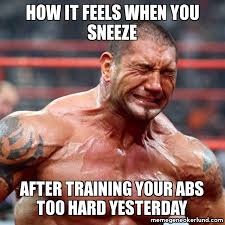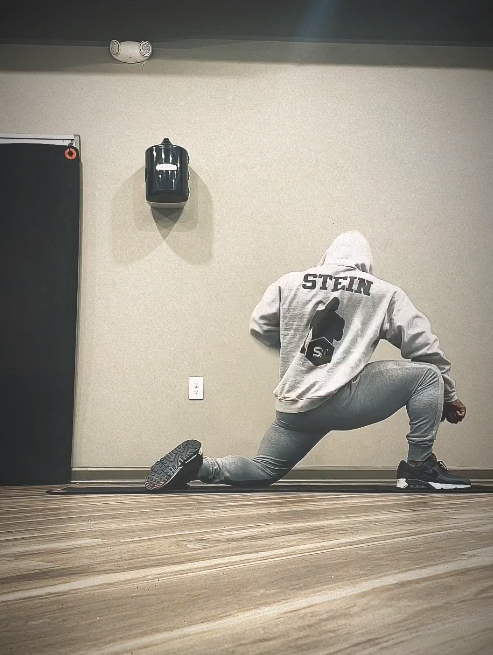
Fasted Cardio – Science and Common Sense
Today I am going to tackle fasted cardio. Before I begin let me make two statements:
1. Science always wins!!!!
2. No matter what approach you take to meeting your fitness goals, two things must remain constant. Hard work and discipline. Which ever methods you choose to follow, as long as you remain true to the cause you will accomplish your goal.
This morning on Instagram, I commented on a friend’s picture in regards to her remarks on fasted cardio. I then received a DM from one of her followers (Im guessing) explaining to me that doing cardio in a fasted state is terrible for muscle retention, fat loss is simply burning more calories than you take in and being fasted doesn’t matter, and that i need to look into changing my philosophy. While he made some valid points during the discussion, I was quickly able to tell that he did not have all of the facts. So to the guy who will remain nameless, here is the information I promised you! Never argue without having all of the facts; or doing your homework on who you are arguing with (FLEX)! LOL… joking
Anyway….. Due to that conversation, I thought it was a perfect time to weigh in on the matter because while I do have a good scientific understanding of the matter, I also have practical experience and know what it takes to get to 5 to 6% body fat without drugs and without burning up all your muscle. Fasted cardio has been always been a staple in my overall fat loss routine.
So, in this post I am going to cover the basic science of fasted cardio and why i believe its better for fat loss…..
What is Fasted Cardio?
Hands down the BEST form of fasted cardio there is!!! LOL
Fasted cardio has been around for quite some time and is re-gaining popularity as an effective way to accelerate fat loss. People think fasted cardio is simply training on an “empty stomach,” which they usually think is simply a stomach that “feels empty.”
Well, let me tell you what it really means….
You are partially correct in saying fasted cardio is cardio done while in a “fasted” state, or in laymen terms your stomach is empty. But it’s actually a bit more than that. It has a lot more to do with how your body processes and absorbs the food you eat.
When you eat food, it gets broken down into various molecules that your cells can use, and these molecules are released into your blood. Insulin is released and its job is to shuttle these molecules into cells. Depending on how much food you eat in a meal, your insulin levels can remain elevated for several hours (anywhere from 3 – 6+).
When your body is digesting and absorbing what you’ve eaten, your body is in a “fed” state. Once it has finished processing and absorbing the nutrients, insulin levels drop to a “baseline” (low) level, and your body enters a “fasted” state. Every day your body moves between “fed” and “fasted” state. Learning how to manage your diet and training between these two states will help you maximize your bodies fat burning potential.
Long Story Short:
- Exercise done during periods where insulin levels are elevated and food is still being processed and absorbed is “fed” training.
- Exercise done during periods where insulin is at a low, baseline level and food is no longer being processed and absorbed is “fasted” training.
Alright, now you know what fasted cardio is. Let’s now talk about one factor that can hinder your body’s ability to burn fat!
Insulin – The Fat Loss Killer

Insulin is defined as a hormone made by the pancreas that helps the cells in the body take up glucose from the blood. Insulin does more than just shuttle nutrients into cells–it also inhibits the breakdown of fatty acids. That is, the higher your insulin levels are, the less your body is going to use fat for energy (both body fat and dietary fat).
This makes sense physiologically. Why burn fat when there’s a surplus of energy (glucose) readily available via the food we just ate? Thus, when you eat food, your body basically shuts down its fat-burning mechanisms and lives off the energy provided by the meal, and it also stores a portion of the excess energy as body fat for later use.
As your body processes and absorbs the food, insulin levels decline, which tells the body to start going to fat for energy as the “fuel” from the meal is running out. When the absorption is finally complete, your body is fully running off its own fat stores for energy. While this last part sounds great, do not get too happy. The amount of fat you burn between meals when your insulin levels are low is nothing to be excited about.
As you can see, your insulin levels spike every time you eat a meal. It takes a while for your insulin levels to drop low enough for your body to tap into fat stores for energy, but by that time your body is telling you that you are hungry again, because of the low insulin levels. So in a nutshell, think of this repetitive cycle as “A Nightmare on Fat-Loss Street” and insulin as Freddy Kruger…
Freddy is keeping you from losing fat! No matter how hard you use “healthy foods” to battle him, you cannot lose body fat! Dont fear any longer. There are two sure fire ways to end this nightmare. Weight training (which I won’t get into in this post) and fasted cardio!
Fasted Cardio and Weight Loss
Fasted cardio is often recommended as a way to speed up fat loss by many experienced gym junkiez and fitness professionals. However without an explanation of how this actually works, you will more than likely lose weight but will not make a dent in your fat loss goals.
The first thing you should know about fasted cardio is it won’t help you lose fat optimally if you don’t maintain a proper diet.
Fasted cardio does not let you somehow cheat the laws of energy balance. At the end of the day, fat loss requires an energy (calorie) deficit, and that means you have to burn more calories than you take in (eat)!
And with that said, fasted cardio does offer some unique fat loss benefits when done properly. Let me first explain how insulin ties into this.
As you would expect, if your insulin levels are elevated before exercise due to a pre-workout meal, lipolysis will be hindered (your body will break down less fat cells during that workout). There is tons of research that has proven this true in both trained and untrained individuals.
With that said, Lipolysis is only one part of fat loss. The other part is Fat Oxidation, which is the actual burning off of the fatty acids by cells. Your body could break down every fat cell it has into usable fatty acids, but most would go unused (your body only burns so much energy) and winds up reconverted back into body fat.
This is where many believe fasted cardio is worthless. They say that while it’s true that exercising in a fed state means less lipolysis during the workout, fat oxidation rates aren’t affected so all that happens is your body mobilizes many more fat cells than it can actually oxidize (burn).
The National Center of Biotechnology Information gives several reasons for this belief to be wrong!
1. Research has shown that the total amount of fatty acids available regulates fat oxidation rates.
While your body may not be able to burn all of the fatty acids mobilized during fasted cardio, the more it has available, the more it burns.
2. Thus, it’s not surprising that research has also shown that ingestion of carbohydrate reduces fat oxidation while at rest and when ingested before exercise.
Now, ingested before exercise is a key phrase here because the study most commonly cited as “proof” that fasted cardio is a waste of time showed that when carbohydrates are ingested after exercise has begun (30 minutes after, in this case), then fat oxidation rates aren’t changed until after 80 to 90 minutes of exercise.
That’s cool andall, but who starts their workouts fasted and then eats carbs 30 minutes into them? Almost, Nobody. Many of us eat our carbs anywhere from 30 to 60 minutes before we exercise, and as you now know, this reduces both lipolysis and fat oxidations rates and thus reduces the total amount of fat we lose in the workouts.
So, the bottom line is when we consider all the available research, it’s clear that fasted cardio results in more fat loss than “fed” cardio, and thus is worthwhile.
Total fat loss isn’t the only reason I like fasted cardio, though. It also helps eliminate stubborn fat from my lower abs, and lower back!
How Fasted Cardio Helps Get Rid of “Stubborn” Fat

If you’re a woman, your hips, thighs, and butt are probably the last to really tighten up when you’re losing weight. If you’re a guy, it’s almost certainly your lower abs, obliques, and lower back.
This isn’t a genetic curse–it’s simply a physiological mechanism.
You see, your body uses chemicals known as “catecholamines” to break fat cells down into usable energy. Catecholamines travel through your blood and “attach” to receptors on fat cells, which then trigger the release of the energy stored within the cells so it can be burned off. Fat cells have two types of receptors for catecholamines, alpha- and beta-receptors.
And to make a long story short, beta-receptors speed up fat mobilization, alpha receptors hinder it.
So if you have been following along you have probably guessed pretty quickly that the areas that get lean quickly have a lot of fat cells with more beta-receptors than alpha, and those stubborn areas mentioned earlier have a large amount of fat cells with more alpha-receptors than beta.
(If not leave me a comment or send me a message and i will try to clear up anything you have questions on!!)
A major issue with these “stubborn fat” areas relates to blood flow.
You may have noticed that fat in areas like the lower back and thighs are slightly colder to the touch than fat in other areas of your body like the arms or chest. This is simply because there’s less blood flowing through the areas.
Less blood flow = fewer catecholamines reach the stubborn fat cells = even slower fat loss.
So you are basically screwed twice here: large amounts of fat cells that don’t respond well to catecholamines and reduced blood flow to keep the catecholamines away.
Fasted Cardio to the Rescue
Blood flow in the abdominal region (upper lower abs, obliques, lower back, butt, hips, upper thighs) is increased when you’re in a fasted state, which means the catecholamines can reach this stubborn fat easier, resulting in more fat loss.
This is where I’ve personally really noticed a difference in cutting with and without fasted cardio. When I include fasted training (both cardio and weightlifting), the journey from about 9% to 6%, where the majority of the fat you’re losing is the “stubborn” stuff, is noticeably faster than when I don’t.
So i bet your next question is “which type of cardio is best to do in a fasted state”. Thats another answer for another post. If you want me to post the answer to this question, leave me a comment. If you have questions you would like answered. Feel free to ask in the comments section as well. Till the next time, Train Hard!!





